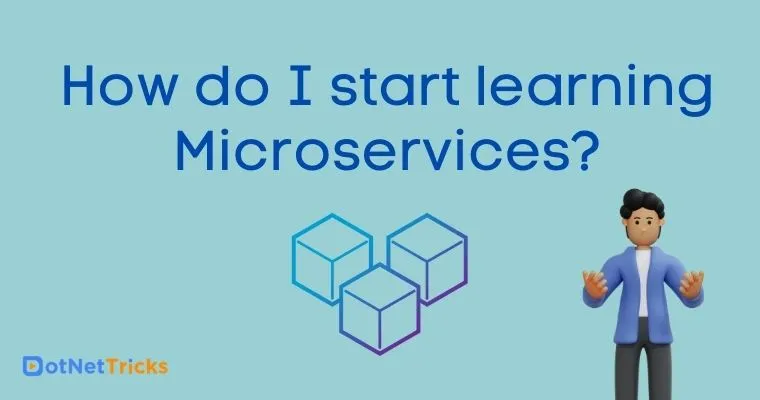How do I start learning Microservices?
Introduction:
How enterprise applications are built has completely changed with the adoption of Microservice architecture. In this contemporary era, it is one of the trendiest software architectures. Unlike the complicated, slow architectural approach, now companies and developers are turning towards the implementation of microservices architecture. For any beginners curious to learn what is microservice, the following article helps a lot. But before getting into the depth, let’s know the prominent reasons for learning microservices:
Reasons to learn microservices:
- Offers granular scaling
- Easy to build and maintain applications
- Offers high-quality code
- Supports cross-team coordination
- Flexibility of using varied tools
- Les chances of risks
- Continuous delivery
- Utilize minimal resources with decreased the cost of ownership
- Facilitates the excellent big data practices
- Lucrative jobs
Challenges of Monolithic architecture:
The prominent traditional architecture widely used before the inception of microservice is monolithic architecture. However, there are various challenges observed in monolithic architecture that ultimately drives developers and companies to implement microservices.
Before learning in-depth about microservices, look at the challenges of monolithic architecture:
- Cannot be built with different technologies
- The entire system is inefficient if one feature fails to work
- Applications cannot be easily scaled since they need updating every time
- Several features of applications cannot be created and implemented simultaneously
- Development is time-consuming
- Not suitable for complex applications
Difference between Monolithic and Microservice architectures:
The key difference between the two is that every feature initially was covered under a single instance that shares a single database. However, with the implementation of microservices, every feature is allotted to different microservices. Every service is individually built and separately implemented. As depicted in the diagram, the monolithic architecture does not segment into a small unit. For efficient flexibility and scaling, the software projects are segmented into loosely combined modules. Therefore, the communication becomes seamless and ultimately there will be a boost in productivity.
Reason to adopt Microservices:
Microservices is so much feasible to those companies and developers who worth the time dedicated through huge codebases. While starting to code any new software product, implementing a monolithic style is usually a natural approach useful for codebase creation. The product is not so complex as the more reputable products. But once the product executes more complex and denser, functioning with microservices is an excellent way to simplify the maintenance of code. Addition of novel features or resolving a bug in codebase in any monolithic application can activate new bugs in some other portion of the code.
Making the transition from the bigger monolithic codebase as well as setting up microservices turns it simpler to detect errors that may come up while adding novel features. After knowing that it can just be in a tiny section of code significantly saves time for developers as well as testers.
Now let’s get into the detail of microservice architecture:
What is Microservices Architecture?
In the simplest term, the microservice architecture is basically an architectural style which configures an application through loosely coupled services. Such modules or collections can be independently implemented, setup, and maintained.
The microservices execute much speedier and the speed is reliable than the traditional monolithic applications. With the implementation of microservice architectures, any organization can advance technology stacks customized to their applications. For an organization of any size, this holds true. Since any application is fragmented into smaller, logically independent applications, the deployment becomes easier. For instance, it is easy to build a cloud application through Amazon AWS without excess efforts.
Now, in the course of learning microservice, it is important to get familiar with its components.
Brief on components of Microservices:
- Clients -Consist of various users from different devices who send requests.
- Identity Providers –Validates clients’ or users’ identities as well as issues security tokens.
- API Gateway –Manages client requests.
- Management –Stabilizes services on nodes as well as identifies failures.
- Static Content – Stores the whole content of the system.
- Content Delivery Networks –Includes distributed network of proxy servers along with their data centers.
- Service Discovery –Guides to find the path of communication between microservices.
- Remote Service –Allows the remote access information that exists in a system of IT devices.
How Do Microservices Work?
Microservices fragments every portion of the codebase into varied modular components. Based on these components, every service accomplishes single or multiple functions.
Every service must be aligned with the business’ abilities to guarantee that the requirements of each function are fulfilled. Such individual functions must be spread across the data centers and clouds. Moreover, they are treated in form of an independent service. Thus, it allows each service to be modified, updated, or removed without posing risk to the rest of the applications.
For flawless interaction, communication amongst each service is vital. Microservices implement APIs along with communication protocols for efficient working with one another. When the services are built on an API gateway, they facilitate hassle-free interaction. Also, it enables a boost in product efficiency, decrement in efforts for coding, and reduce threats of errors.
You may start from scratch and built a software product via microservices or make a transition from a monolithic application. Whatever the case it, the microservices are efficient to present easily sustainable and scalable product.
Classification of Microservices:
There are 2 major types of microservices –Stateless and Stateful.
Stateless:
Stateless services behave as the base for any distributed application. Such microservices does not sustain the session state amid requests. In case any service is deleted from the application, it would not influence the processing for the particular service. Moreover, it would be incorporated as a portion of the whole application.
Stateful:
Each microservice is independent. When two or multiple microservices communicate, the stateful microservices retain a service request state. They do so by storing the session information within the code. If there are cases wherein session information must be stored, it is better to go for stateful services.
After getting enough familiar with the basics of Microservices, now it’s time to understand how it is implemented.
How are Microservices Implemented?
There are 2 approaches available for the implementation of microservices. They are Greenfield and Brownfield. The greenfield approach is useful when you start using microservices architecture from scratch. Generally, it is the recommended approach when you are developing any system in some new environment. This is since a new environment does not have a legacy system integration. However, this approach is at higher risk since it adopts building products on new infrastructure.
The brownfield approach is useful when making the transition from an existing monolithic application to microservices architecture. The microservices are dealt with in stages to guarantee that there is a strategy already available before the implementation. You just need to decide which segment of the application to be worked on first. Next, decide how to gradually progress until all services are created.
You also need to be familiar with the testing, so take a look below:
Testing of each service in Microservices:
Microservices are effortlessly created and sustained if every service is stored in an isolated container. With the use of cloud capabilities, it becomes easy to execute the service from any place and set up the desired environment. Subsequently, every container becomes a complete package that utilizes the smallest possible libraries as well as executables required by the particular service.
For testing of each service, a containerization is an excellent approach. It does not execution of tests on the whole application. Consequently, it considerably reduces the time needed for the execution of tests. So, you get new features implemented very quickly. During instances when a particular service needs repair, only that application needs to be shut down. Moreover, if any server issue takes place, the particular container could be deleted to iterate the process.
Benefits of Microservices:
- Organized around business capabilities
- Highly maintainable and testable
- Independent deployment
- Loosely coupled
- Fault Isolation
- Boosts productivity and speed
- Mixed Technology Stack
To make the most of the implementation, you can look at the best practices as below:
Best Practices to design Microservices:
- Separate data storage for each microservice
- Maintain code at a similar level of maturity
- Separate build for each microservice
- Deploy into containers
- Treat servers as stateless
Resources to learn Microservices:
Dotnettricks provides online live interactive with training certification. You can also attend their live technical questions & answers sessions if you want to ask any query and learn something new from issues of other project development issues. The microservices .net training from Scholarhat also prepares you well for a job Microservices interview in this field.
List of other best courses and certifications for learning Microservices are:
- Microservices Tutorials and Certifications (ScholarHat)
- Microservices Tutorial & Courses (LinkedIn Learning)
- Scalable Microservices with Kubernetes – Free Course (Udacity)
- Microservices Architecture (Pluralsight)
- Microservices with Spring Boot (Coursera)
- Microservices Tutorial (Edureka)





